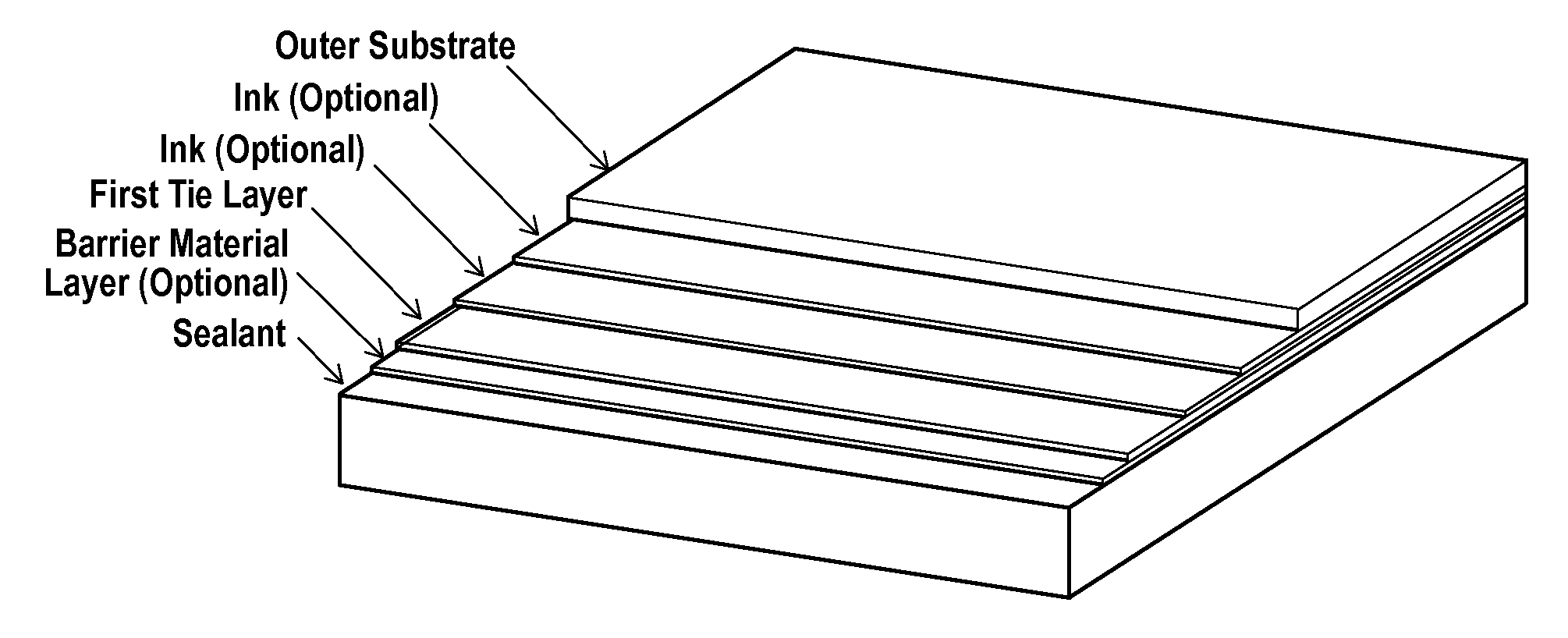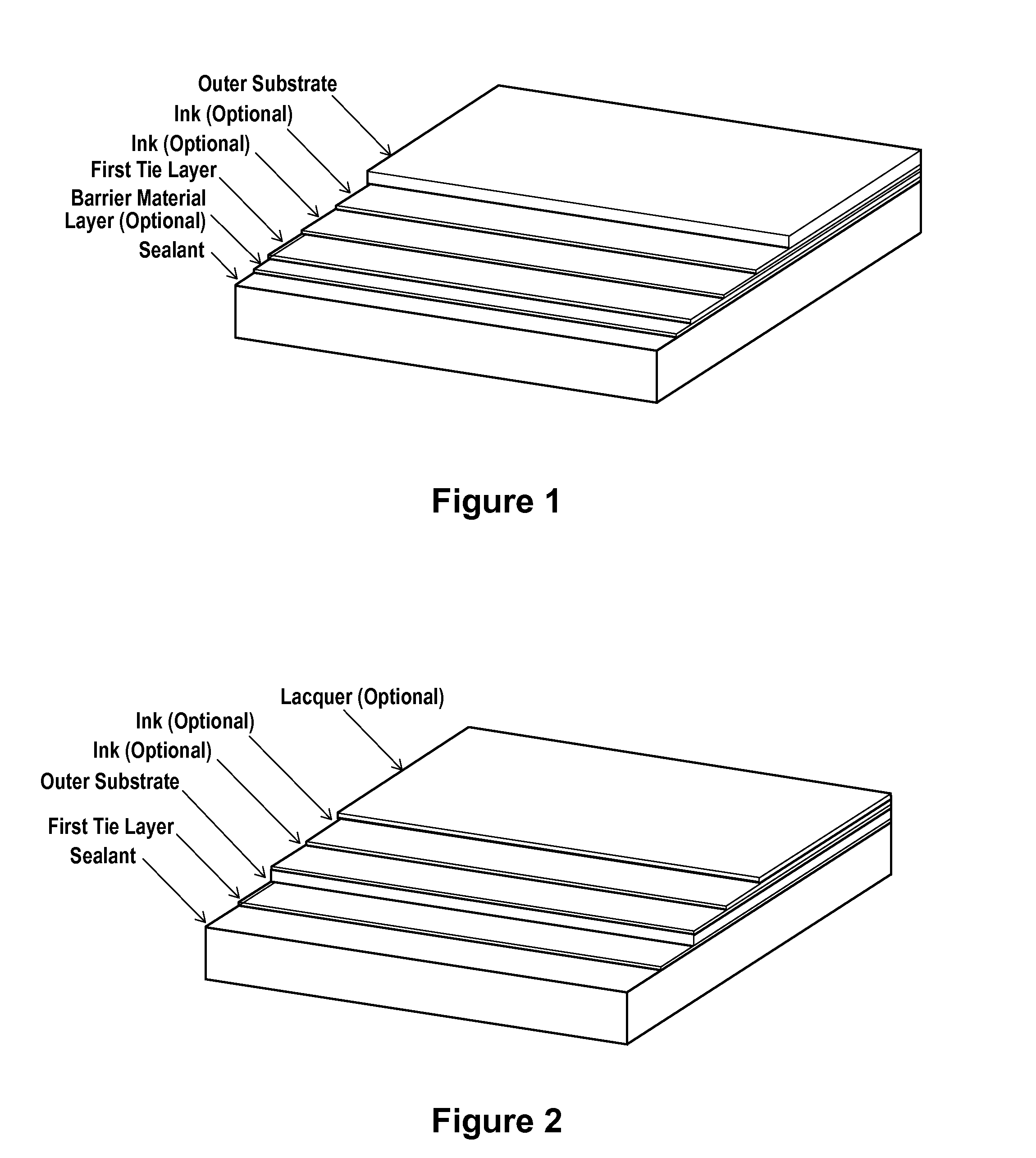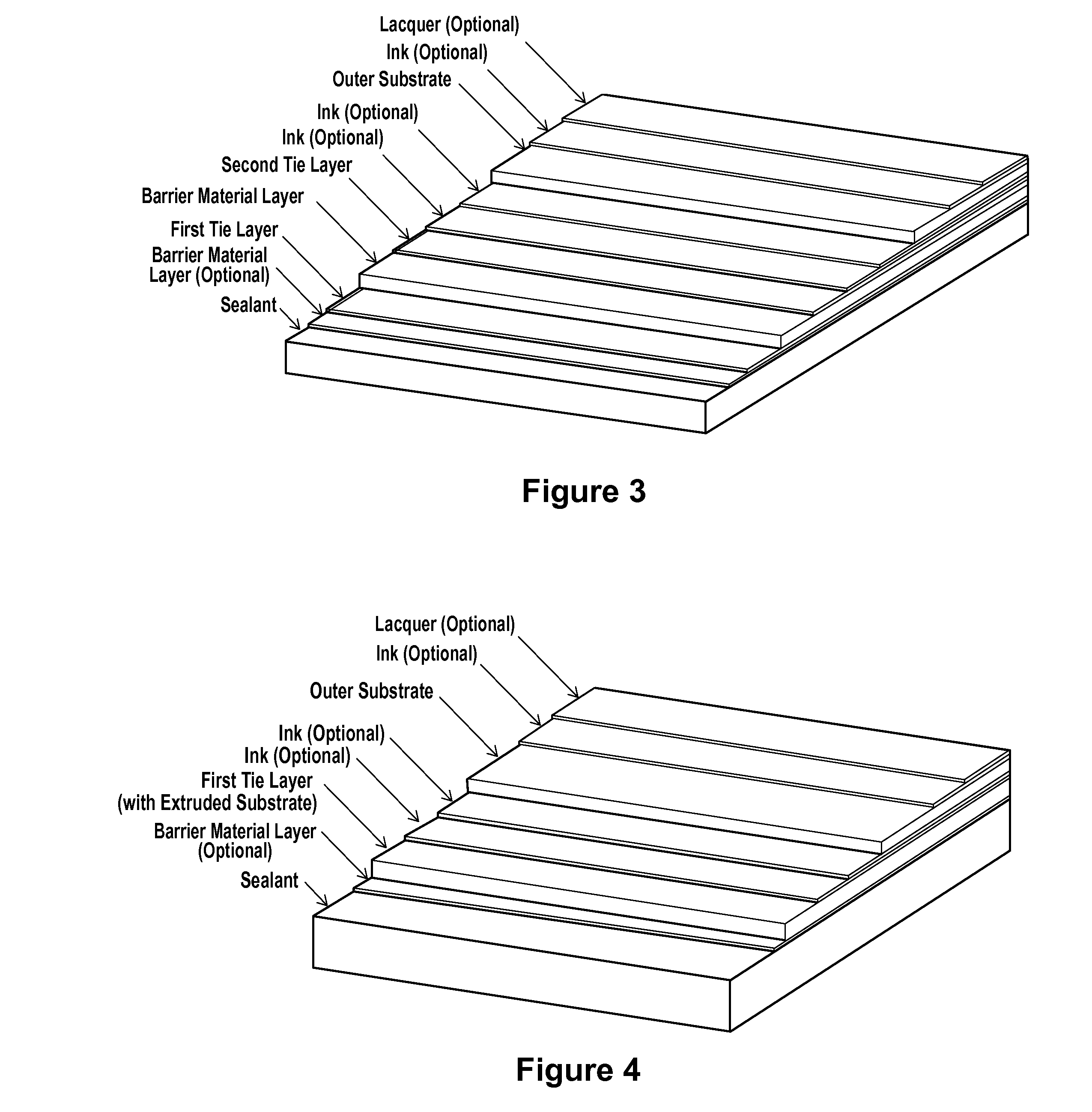Flexible barrier packaging derived from renewable resources
a technology of renewable resources and flexible packaging, applied in packaging, butchering, synthetic resin layered products, etc., can solve the problems of unnatural or unenvironmental protection products derived from petrochemicals, consumers are hesitant to purchase products made from limited non-renewable resources, and consumers may have adverse perceptions of products made from petrochemicals as being “unnatural” or unsustainabl
- Summary
- Abstract
- Description
- Claims
- Application Information
AI Technical Summary
Benefits of technology
Problems solved by technology
Method used
Image
Examples
Embodiment Construction
[0020]Flexible barrier packages have now been developed that are substantially free of virgin, petroleum-based materials and that also have desirable manufacturing, stability, and performance properties. Flexible packages, which typically have a wall thickness of less than about 200 μm, are usually non-load bearing (i.e., the package is unable to support the weight of other packages without gross deformation). The flexible barrier packages described herein are advantageous because they have the same look and feel, and similar performance characteristics as flexible barrier packages made from virgin, petroleum-based materials (e.g., moisture vapor transmission rate (MVTR), lamination strength, and coefficient of friction), yet the flexible barrier packages described herein have improved sustainability over packages derived from virgin, petroleum-based materials.
[0021]As used herein, “sustainable” refers to a material having an improvement of greater than 10% in some aspect of its Lif...
PUM
| Property | Measurement | Unit |
|---|---|---|
| thickness | aaaaa | aaaaa |
| thickness | aaaaa | aaaaa |
| thickness | aaaaa | aaaaa |
Abstract
Description
Claims
Application Information
 Login to View More
Login to View More - R&D
- Intellectual Property
- Life Sciences
- Materials
- Tech Scout
- Unparalleled Data Quality
- Higher Quality Content
- 60% Fewer Hallucinations
Browse by: Latest US Patents, China's latest patents, Technical Efficacy Thesaurus, Application Domain, Technology Topic, Popular Technical Reports.
© 2025 PatSnap. All rights reserved.Legal|Privacy policy|Modern Slavery Act Transparency Statement|Sitemap|About US| Contact US: help@patsnap.com



